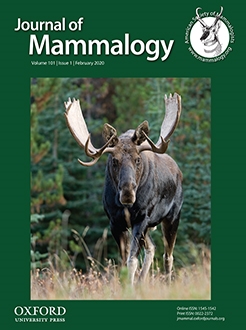The reproductive season of white-tailed deer (Odocoileus virginianus) has been hypothesized to be aseasonal south of about 14°–18°N latitude, where annual variation in day length is low. We tested this idea by using camera-trap data (1,336 photographed individuals identified by age and sex) collected during 2011–2017 in the dry tropical forest of Santa Rosa National Park, northwest Costa Rica, where wet and dry seasons are well-defined. We identified variation in monthly occurrence of spotted deer fawns, as well as the status of antler growth of male deer, specifically related to the very seasonal environment of the region. Year-round reproduction likely occurs, but the rainfall pattern in the area greatly influences the relative frequency of reproductive indicators, with most births occurring during the dry season, and a second peak occurring toward the latter part of the wet season. We speculate that food resources are the major influence on reproductive patterns, and that variation in types and timing of food resource availability likely account for the variation in reproductive patterns.
How to translate text using browser tools
5 December 2019
Reproduction of white-tailed deer in a seasonally dry tropical forest of Costa Rica: a test of aseasonality
Todd K. Fuller,
Alexander M. Silva,
Victor H. Montalvo,
Carolina Sáenz-Bolaños,
Eduardo Carrillo J.
ACCESS THE FULL ARTICLE

Journal of Mammalogy
Vol. 101 • No. 1
February 2020
Vol. 101 • No. 1
February 2020
fawns
Odocoileus virginianus
reproduction
Seasonality
white-tailed deer




